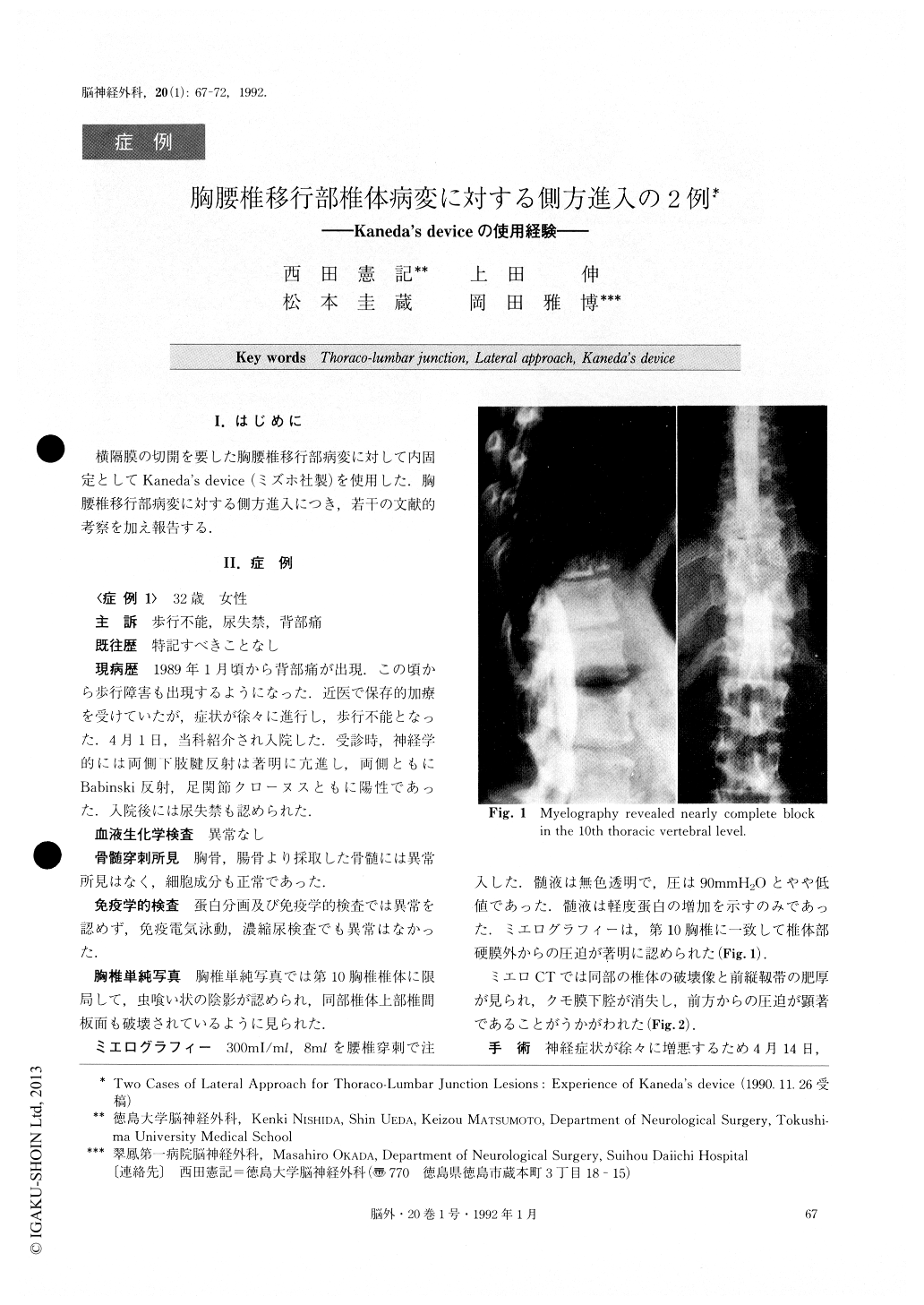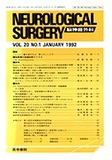Japanese
English
- 有料閲覧
- Abstract 文献概要
- 1ページ目 Look Inside
I.はじめに
横隔膜の切開を要した胸腰椎移行部病変に対して内固定としてKaneda's device(ミズホ社製)を使用した.胸腰椎移行部病変に対する側方進入につき,若干の文献的考察を加え報告する.
Case 1: a 32-year-old woman was admitted to our hospital with major complaints of gait disturbance and urinary incontinence. The tendon reflex was markedly increased in the bilateral lower extremities, and both Babinski's reflex and clonus were strongly positive. Myelography revealed complete block in the 10th tho-racic vertebral level. On April 15, 1989, a tumor in the vertebral region was exposed and excised via a right posterolateral approach. Kaneda's device was used for internal fixation. The tumor was diagnosed as myeloma histologically.The postoperative course was uneventful. Postoperatively, the patient became capable of walking by herself.
Case 2: an 18-year-old woman was admitted because of burst fractures of the 1st and 2nd lumbar vertebrae due to a traffic accident in January of 1989. The frac-tured bones had been manually repositioned and fixed with plaster. However, the patient still had gait disturb-ance (intermittent claudication). Myelography revealed a complete block in the 2nd lumbar vertebral region. On May 7, the vertebral foramen was opened via a left anterolateral approach, and internal fixation was per-formed using Kaneda's device. Postoperatively, the pa-tient recovered full ability to walk, and returned to nor-mal social activity.
From our experience, it is thought to be useful to em- ploy a right posterolateral approach to the thoracic ver-tebrae, and a left anterolateral approach to the lumbar vertebrae. We used Kaneda's device for internal fixa-tion, successfully. However, this device has the follow-ing disadvantages; (1) there are few plates designedfor females, whose vertebrae are small, (2) it is difficult to preserve the arteries of Adamkiewicz and (3) postoperative MRI becomes impossible.

Copyright © 1992, Igaku-Shoin Ltd. All rights reserved.


